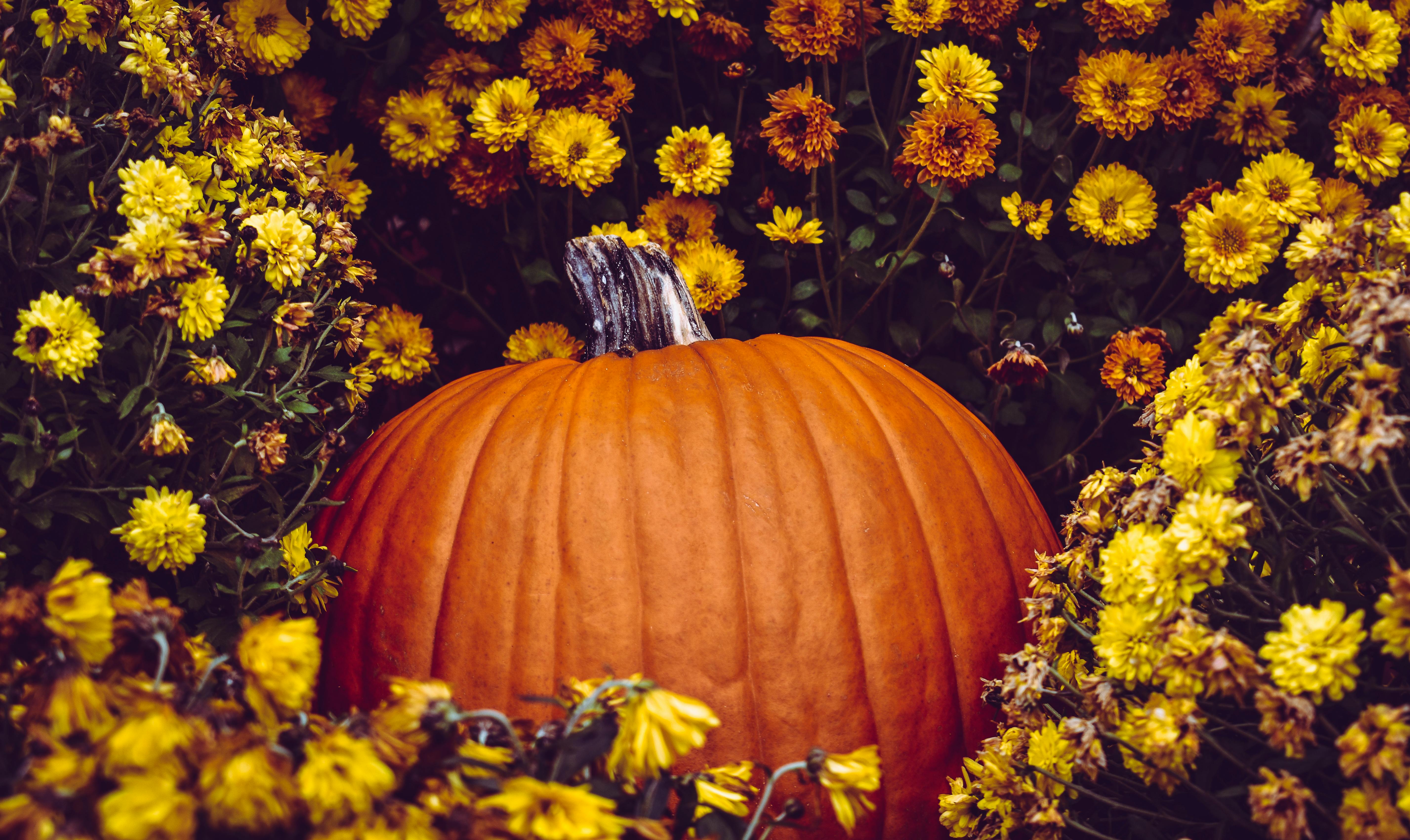Pumpkin plants are an iconic part of the fall season, with their bright orange fruits and large, green leaves. But what do pumpkin plants actually look like? The answer is that they can vary quite a bit in size and shape depending on the variety of pumpkin, but all have a few key features that make them instantly recognizable. In this article, we’ll take a closer look at the physical characteristics of pumpkin plants and discuss how you can identify them in the garden or at your local farmers market.
Flowers of a Pumpkin Plant
Pumpkin plants produce yellow flowers that are either male or female. The male flowers grow on long stems and have an anther in the center that contains the pollen. The female flowers grow on short stems with a swollen ovary located at the base. It is necessary to have both types of flower present for pollination and fruit production to occur.
The female pumpkin flower opens first, while the male flowers open later in the day and remain open until late afternoon. Bees, moths, and other flying insects are attracted to these yellow blooms by their sweet aroma and abundant nectar. Pollen from the male flower then transfers to the stigma of the female flower, allowing fertilization to occur.
Once pollinated, pumpkin flowers go through a period of rapid growth before turning into small green fruit. During this transition period, it is important for gardeners to protect pumpkins from frost damage by covering them with blankets or plastic sheets. Without this protection, delicate blossoms may not survive cold temperatures and pollination will not occur naturally.
Pumpkin plants require ample sunlight and well-drained soil in order to produce healthy blooms and fruits. Gardeners should also ensure that they are providing adequate water throughout their growing season as too much or too little can negatively affect flower production. With proper care and maintenance, pumpkin plants can produce abundant blooms that will eventually turn into delicious fruits!

Fruit of a Pumpkin Plant
The fruit of a pumpkin plant is the pumpkin itself. The pumpkin is a round, orange-colored fruit that is commonly used in recipes for pies, soups, and other dishes. It can also be carved into decorative items such as jack-o-lanterns. The pumpkin is actually a member of the gourd family, which includes cucumbers, squash, and zucchini.
The average size of a pumpkin can vary from three to over one hundred pounds, with the larger varieties often used for competitions or as decorations. Pumpkins are grown in many parts of the world and come in various shapes and sizes. They are harvested when they reach maturity and have a hard rind with an orange hue.
Pumpkins are nutrient dense fruits that are rich in vitamins and minerals such as vitamin A, vitamin C, fiber, magnesium, potassium, iron and zinc. They also contain antioxidants which can help reduce inflammation in the body and may reduce the risk of certain cancers. Pumpkins can be eaten raw or cooked in several different ways including baking them into pies or roasting them for soup.
The seeds of the pumpkin plant can also be eaten as a snack or added to salads or other dishes for extra flavor and nutrition. The seeds are high in protein and healthy fats such as omega-3 fatty acids which help support cardiovascular health. Pumpkin seeds are also rich in minerals such as magnesium which helps regulate blood pressure levels and may reduce symptoms of anxiety and depression.
Pumpkin plants are easy to grow at home with minimal effort required to yield healthy fruits with nutrient packed seeds!
Stem of a Pumpkin Plant
The stem of a pumpkin plant is an important component of the plant’s growth and development. It begins as a short, thin, green stalk that grows up from the center of the plant and eventually supports the leaves and flowers. As the pumpkin matures, the stem thickens and becomes woody. It is important for supporting the weight of the pumpkin, as well as providing water and nutrients to all parts of the plant. The stem also helps protect the pumpkin from predators by providing a barrier between it and any potential threats.
Roots of a Pumpkin Plant
The roots of a pumpkin plant are essential for nutrient and water absorption from the soil. They are usually located close to where the stem originates, near the base of the plant. The roots grow deep into the soil to supply essential minerals and moisture to help keep the pumpkin healthy. The root system also provides stability for the entire plant by anchoring it firmly in place so that it can withstand strong winds or heavy rains. Without strong roots, pumpkins could easily be uprooted or damaged by external forces.
Lifespan of a Pumpkin Plant
Pumpkin plants are annual vegetables that are grown for their edible fruits. They grow best in warm climates and can be harvested in late summer or early autumn. The lifespan of a pumpkin plant is typically one growing season, from planting to harvesting. Once the plants have produced fruit, they will begin to die back and eventually die completely. The lifespan of a pumpkin plant can vary depending on the variety, climate and other factors.
Most varieties of pumpkins require between 90 and 120 days to reach maturity. This means that the total lifespan of a pumpkin plant can range from 90 to 120 days, depending on the variety and growing conditions. While some varieties may reach maturity in as little as 75 days, others may take up to 140 days or more.
Pumpkins need plenty of sunshine for optimal growth, so it’s important to choose a location with full sun exposure for your garden. Pumpkins also need plenty of water in order to thrive – about an inch per week – so make sure your garden is well-watered throughout the growing season.
When it comes time to harvest your pumpkins, be sure not to wait too long or else they may start to rot on the vine. Once harvested, pumpkins should be stored in a cool place away from direct sunlight and moisture until ready for use. With proper care and maintenance, you can enjoy a successful harvest and extend the lifespan of your pumpkin plants!

Conclusion
Pumpkin plants are truly an amazing sight to behold. Not only do they produce the large, iconic pumpkins that we all recognize, but they also have beautiful leaves and flowers. With their bright orange color and large size, it’s easy to see why so many people are drawn to them. And with proper care and maintenance, you can have a successful pumpkin growing season year after year. So take the time to learn what pumpkin plants look like and how to care for them in order to make the most out of your pumpkin growing experience!
Pumpkins are a staple of fall decorating and can add a fun and festive touch to any home or garden. With their vibrant colors, stunning foliage, and delicious fruits, pumpkin plants offer something for everyone. From novice growers to experienced gardeners alike, there is something special about these amazing plants that makes them a must-have in any garden. So get your hands on some pumpkin seeds this year and start enjoying the beauty of these amazing plants!

